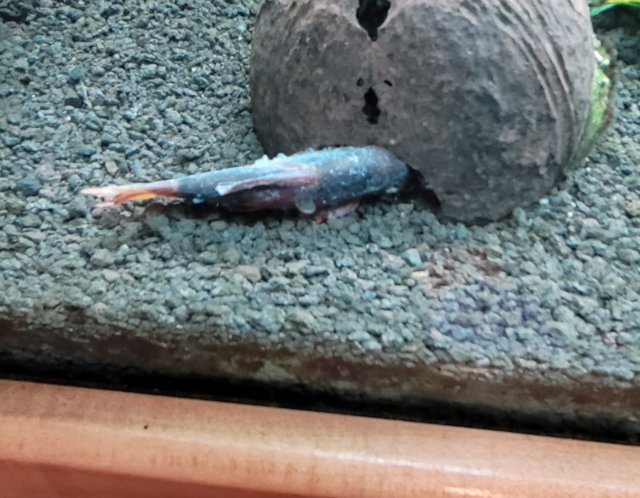Yes, 3 teas = 1 table.
Here is the next thing. Fish who get and recover from ich have an immunity. The science knows this is the case, however, they are not sure how long it lasts or if it is different for species.
The rule I follow for Q is tank/farm raised raised 1 month.
Wild caught and imported (no matter how raised) 3 months.
The above times are continuous days without any illness etc. If you have to treat the fish, if and when they recover, the time starts over from 0 days. There are some diseases which can take months to manifest. You can choose to do this or some other way. Its always yput call as they are ypur fish and your tank(s).
These loner times are most important for your rarest and/or most expensive fish as well as your favorites. Those should receive the benefit of the full period since they are the ones you want least to lose.
If you want to know more about treating ich and its life cycle than most, here is a pretty neat review paper:
REVIEW ARTICLE
An assessment of the use of drug and non-drug interventions
in the treatment of Ichthyophthirius multifiliis Fouquet, 1876,
a protozoan parasite of freshwater fish
S. M. PICÓN-CAMACHO1*, M. MARCOS-LOPEZ2, J. E. BRON1 and A. P. SHINN1
1 Institute of Aquaculture, University of Stirling, FK9 4LA Stirling, UK
2 Marine Laboratory, 375 Victoria Rd, AB11 9DB Aberdeen, UK
(Received 17 June 2011; revised 12 September 2011; accepted 16 September 2011; first published online 14 November 2011)
S U MM A RY
Infection by the ciliate protozoan Ichthyophthirius multifiliis Fouquet, 1876 causes significant economic losses in freshwater
aquaculture worldwide. Following the ban on the use of malachite green for treating food fish, there has been extensive
research aimed at identifying suitable replacements. In this paper we critically assess drug and non-drug interventions,
which have been tested for use or have been employed against this parasite and evaluate possibilities for their application in
farm systems. Current treatments include the administration of formaldehyde, sodium chloride (salt), copper sulphate and
potassium permanganate. However, purportedly more environmentally friendly drugs such as humic acid, potassium
ferrate (VI), bronopol and the peracetic acid-based products have recently been tested and represent promising alternatives.
Further investigation, is required to optimize the treatments and to establish precise protocols in order to minimize the
quantity of drug employed whilst ensuring the most efficacious performance. At the same time, there needs to be a greater
emphasis placed on the non-drug aspects of management strategies, including the use of non-chemical interventions
focusing on the removal of free-swimming stages and tomocysts of I. multifiliis from farm culture systems. Use of such
strategies provides the hope of more environmentally friendly alternatives for the control of I. multifiliis infections.
from http://dspace.stir.ac.uk/bitstream/...macho et al Parasitology Ich chemo review.pdf
Here is the next thing. Fish who get and recover from ich have an immunity. The science knows this is the case, however, they are not sure how long it lasts or if it is different for species.
The rule I follow for Q is tank/farm raised raised 1 month.
Wild caught and imported (no matter how raised) 3 months.
The above times are continuous days without any illness etc. If you have to treat the fish, if and when they recover, the time starts over from 0 days. There are some diseases which can take months to manifest. You can choose to do this or some other way. Its always yput call as they are ypur fish and your tank(s).
These loner times are most important for your rarest and/or most expensive fish as well as your favorites. Those should receive the benefit of the full period since they are the ones you want least to lose.
If you want to know more about treating ich and its life cycle than most, here is a pretty neat review paper:
REVIEW ARTICLE
An assessment of the use of drug and non-drug interventions
in the treatment of Ichthyophthirius multifiliis Fouquet, 1876,
a protozoan parasite of freshwater fish
S. M. PICÓN-CAMACHO1*, M. MARCOS-LOPEZ2, J. E. BRON1 and A. P. SHINN1
1 Institute of Aquaculture, University of Stirling, FK9 4LA Stirling, UK
2 Marine Laboratory, 375 Victoria Rd, AB11 9DB Aberdeen, UK
(Received 17 June 2011; revised 12 September 2011; accepted 16 September 2011; first published online 14 November 2011)
S U MM A RY
Infection by the ciliate protozoan Ichthyophthirius multifiliis Fouquet, 1876 causes significant economic losses in freshwater
aquaculture worldwide. Following the ban on the use of malachite green for treating food fish, there has been extensive
research aimed at identifying suitable replacements. In this paper we critically assess drug and non-drug interventions,
which have been tested for use or have been employed against this parasite and evaluate possibilities for their application in
farm systems. Current treatments include the administration of formaldehyde, sodium chloride (salt), copper sulphate and
potassium permanganate. However, purportedly more environmentally friendly drugs such as humic acid, potassium
ferrate (VI), bronopol and the peracetic acid-based products have recently been tested and represent promising alternatives.
Further investigation, is required to optimize the treatments and to establish precise protocols in order to minimize the
quantity of drug employed whilst ensuring the most efficacious performance. At the same time, there needs to be a greater
emphasis placed on the non-drug aspects of management strategies, including the use of non-chemical interventions
focusing on the removal of free-swimming stages and tomocysts of I. multifiliis from farm culture systems. Use of such
strategies provides the hope of more environmentally friendly alternatives for the control of I. multifiliis infections.
from http://dspace.stir.ac.uk/bitstream/...macho et al Parasitology Ich chemo review.pdf




